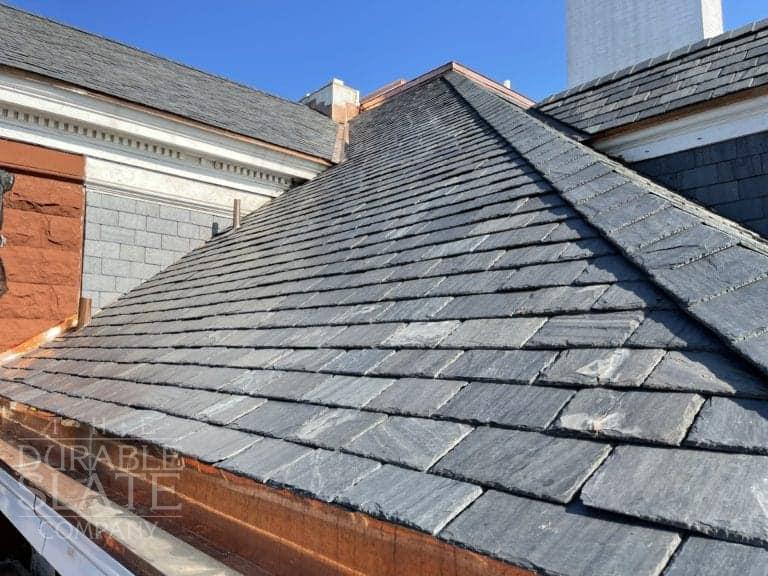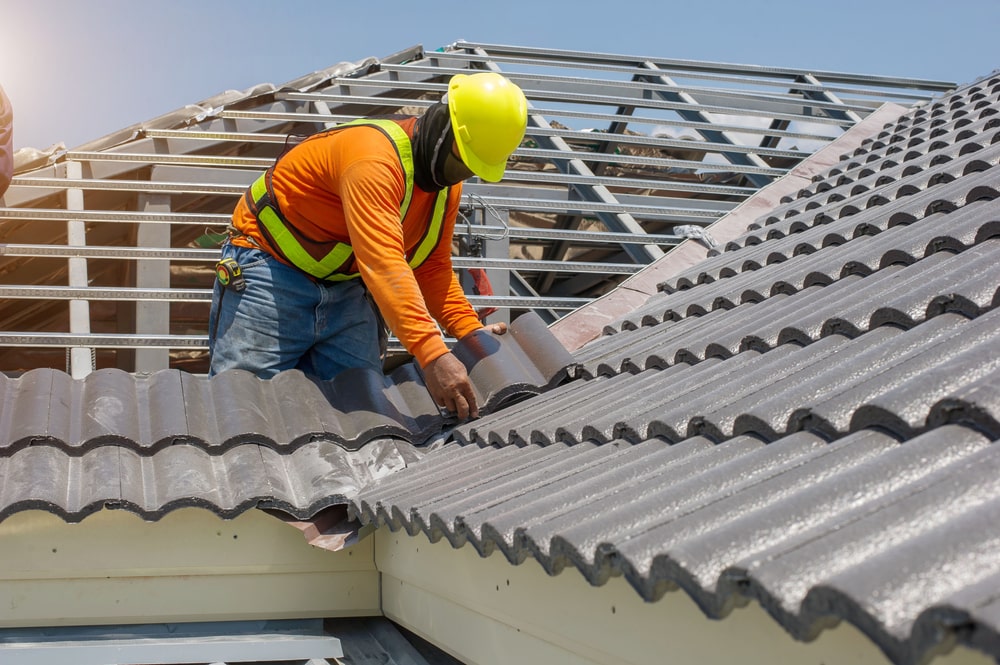The Relevance of Selecting Skilled Roofing Companies Gainesville Florida
The Relevance of Selecting Skilled Roofing Companies Gainesville Florida
Blog Article
Ideal Practices for Ensuring Proper Roofing Ventilation
A well balanced consumption and exhaust air vent ratio, frequently 1:300, plays an essential role, with intake vents ideally put at the lower side of the roof covering for amazing air entry and exhaust vents at the peak for warm air departure. Keeping insulation away from vents is vital to stop air flow limitation.
Understand Air Flow Essentials
Appropriately recognizing air flow fundamentals is crucial for guaranteeing the long life and performance of roof covering systems. Effective ventilation minimizes wetness buildup and temperature level extremes in the attic, both of which can cause considerable structural damage gradually. A well-ventilated roofing assists in protecting against typical concerns such as mold and mildew growth, timber rot, and ice dams, which can endanger the integrity of the roofing materials and the underlying structures.
The primary goal of air flow is to assist in the movement of air, enabling a constant exchange between the indoor and outdoor settings. This balance is attained through a combination of consumption and exhaust vents that collaborate to preserve optimum air flow. Consumption vents, commonly located along the soffits or eaves, permit fresh air to get in the attic area, while exhaust vents, commonly positioned at or near the roof ridge, enable hot, moist air to run away.
Key aspects affecting the effectiveness of roof ventilation include proper placement, sufficient sizing, and making sure that both consumption and exhaust vents are unobstructed. Regular assessment and upkeep are critical to identify potential blockages, damage, or ineffectiveness in the air flow system, thus protecting the roofing's performance and toughness.
Kinds Of Roof Vents
Roof vents play a critical function in preserving reliable attic room ventilation and, by expansion, the total wellness of the roof system. Different types of roof vents are readily available, each with one-of-a-kind advantages tailored to particular roofing demands. Ridge vents, as an example, are mounted along the roof covering's optimal, allowing warm, damp air to get away from the attic room. They use continual ventilation and mix perfectly with the roofline, making them both efficient and visually pleasing.

Soffit vents are set up under the eaves and job in tandem with roofing vents to guarantee a well balanced consumption and exhaust system. By allowing cooler air to get in from below, soffit vents facilitate the expulsion of hot air via upper vents. Gable vents, situated on the outside wall surfaces of the attic, deal an additional efficient remedy, especially in homes with gable roofings.
Assess Your Present Ventilation

Following, consider the age and condition of your roofing materials and air flow parts. Source Older systems may not adhere to existing structure codes or may have worn away over time, reducing their performance. Conduct a comprehensive exam to identify any kind of indications of damage, such as corrosion, damages, or voids that can compromise the system's efficiency.
Additionally, measure the attic room temperature and moisture levels. High temperature levels and humidity can suggest inadequate ventilation - roofing companies gainesville florida. Use a hygrometer and thermostat to obtain precise analyses, comparing them with outside problems. Relentless discrepancies suggest possible issues that need addressing.
Installment Best Practices
Efficient installment of roofing ventilation systems is vital for guaranteeing ideal performance and longevity. Appropriate installment starts with comprehending the details air flow demands of the roof covering and the structure it covers. This entails calculating the correct proportion of consumption to tire vents, commonly adhering to the 1:300 rule, which specifies one square foot of air flow for every 300 square feet of attic room floor area.

The positioning of vents is similarly critical. Consumption vents need to be set up at the roof's reduced side, frequently in the soffits, to permit awesome air to go into. Exhaust vents, on the other hand, ought to be mounted near or at the roof's height to help with the leave of cozy, damp air. This develops a natural airflow that aids maintain temperature level and wetness balance within the attic room area.
Seal try these out all air vent connections carefully to prevent air leaks and possible water seepage. Use top quality products and adhere to producer guidelines to make sure durability and effectiveness. Additionally, incorporating ridge vents with baffles can considerably improve air movement performance by protecting against wind-driven rainfall and snow from entering the attic.
Inevitably, precise installation of roofing air flow systems mitigates prospective problems such as mold development, ice dams, and architectural damages, making sure the roof's honesty and the building's general health and wellness.
Routine Upkeep Tips
Consistency in upkeep techniques is essential to making sure the lasting effectiveness of roofing air flow systems. Throughout these examinations, make sure that vents are totally free of particles, nests, and various other obstructions that could hamper airflow.
Use a soft brush or a vacuum cleaner to eliminate dirt and debris from intake and exhaust vents. Be careful not to damage the air vent screens or louvers during the process.
Appropriate insulation is just as essential. Ensure that attic insulation does not obstruct the vents, as this can drastically restrict air movement. If any kind of insulation has actually shifted or settled, reposition or replace it to preserve an effective obstacle.
Finally, replace any type of harmed or missing out on elements promptly. Busted vents, fractured tiles, or worn-out flashing can all contribute to poor ventilation and ought to be resolved right away. Normal maintenance ensures that the roof ventilation system works optimally, consequently extending the life expectancy of the roofing itself.
Conclusion
Making sure proper roof ventilation is paramount for maintaining the efficiency and resilience of a roofing system. Adherence to the 1:300 intake and exhaust air vent ratio, coupled with the critical placement of vents, is essential. Normal biannual examinations, particles cleaning, and ensuring insulation does not block air movement are crucial techniques. Carrying out these finest techniques will cultivate a well-ventilated roof, therefore mitigating possible problems connected to moisture buildup and too much warmth, eventually prolonging the roof's life-span.
A well balanced intake and exhaust air vent proportion, generally 1:300, plays an essential duty, with consumption vents ideally placed at the reduced edge of the roofing for cool air access and exhaust vents at the peak for cozy air exit. Intake vents, normally located along the soffits or eaves, permit fresh air to get in the attic space, while exhaust vents, commonly situated at or near the roof ridge, enable hot, damp air to leave.
Soffit vents are set up under the eaves and job in tandem with roof vents to guarantee a balanced intake and exhaust system. By enabling cooler air to go into from below, soffit vents help with the expulsion of hot air with top vents. Adherence to the 1:300 intake and exhaust air vent ratio, coupled with the tactical positioning of vents, is vital.
Report this page